Chord progressions are the backbone of nearly every song you’ve ever bobbed your head to or found yourself humming days later.
They give the music its flow, its narrative, and when done right, its unforgettable impact.
However, if you’re unfamiliar with common chord progressions or the most sought-after chord progression chart, you might find yourself navigating a maze with no exit in sight.
That’s why we’ll be breaking down everything you need to know about chord progressions right now.
In today’s article, we’ll be breaking down:
- The essence of chord progressions ✓
- Music theory essentials ✓
- Major vs. minor: the age-old battle ✓
- Diminished & tonic chords ✓
- Scale degrees ✓
- Popular & common chord progressions ✓
- Crafting and manipulating chords ✓
- Advanced chord progression tips, tricks & techniques ✓
By the end of this journey, you’ll have a deep understanding of popular chord progressions.
Plus, be equipped to manipulate them like the industry’s most seasoned pros.
So, let’s dive in…
Table of Contents
- Chord Progression Charts: Breaking it Down
- Your First Dive into Chord Progression Charts
- Navigating Major Chords & Minor Chords
- Common Chord Progressions
- Major Scales & Minor Scales: Everything You Need to Know
- Diminished Chords & Tonic Chords
- Chord Arrangement Techniques
- Pushing Boundaries: Exploring & Innovating with Chords
- Getting Creative: Advanced Tips
- Chord Progression Chart: Final Thoughts
Chord Progression Charts: Breaking it Down
The beauty of music lies in its unpredictable nature.
Every producer will agree that the backbone of any enticing track is a fire chord progression.
Whether you’re a newbie or a pro, understanding chord progression charts is an absolute game-changer.
So, let’s dive deep into the heart of music and unravel the magic of these charts.
-
What are Chord Progressions?
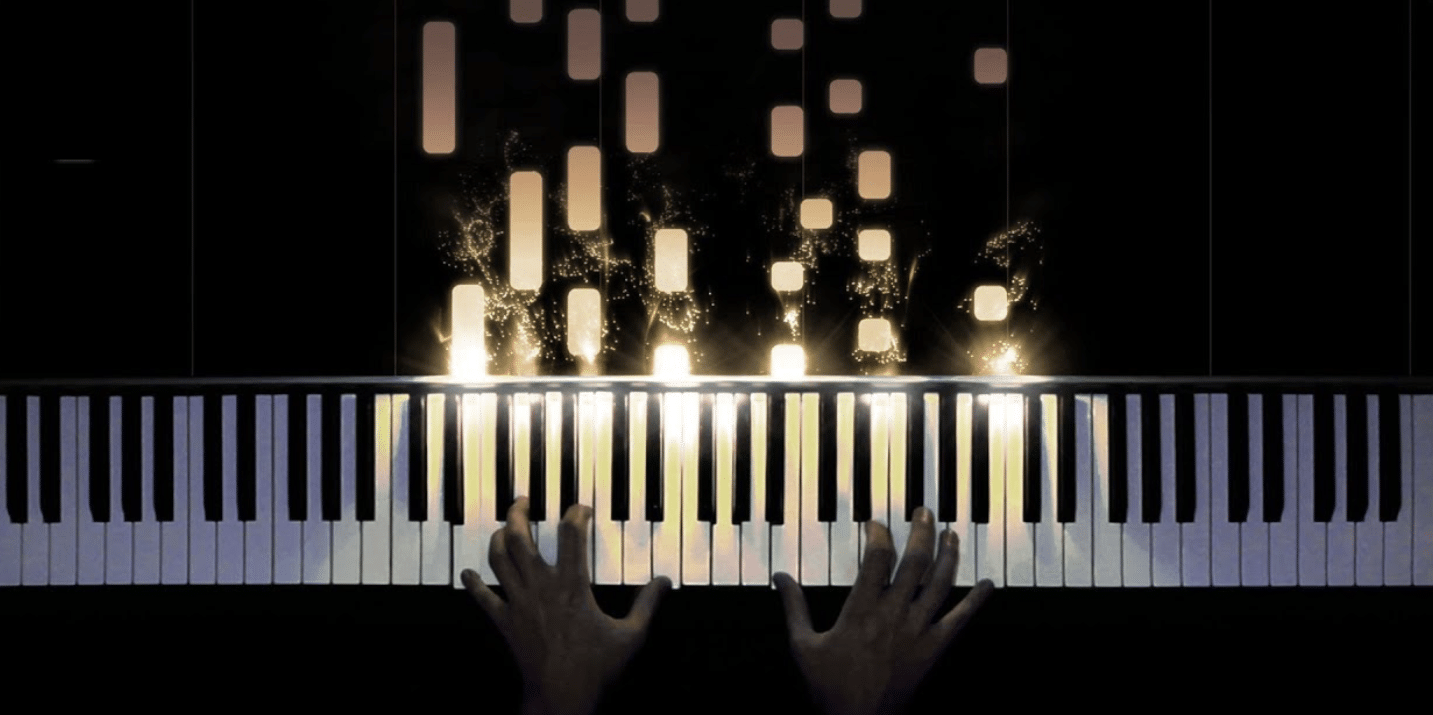
At its core, a chord progression is a sequence of chords played in a set pattern.
Think of them as the narrative of your song, they tell its story, set the mood, and guide the listener through a sonic journey.
In the realm of hip-hop, the chord progression formula can make or break a track.
It’s the foundation upon which your beats, your melodies, and your lyrics will rest.
As well as determine whether your track is:
- Soulful
- Upbeat
- Somber
- Intense
When we speak of chord progressions, we refer to the key in which the song is set.
For instance, the key of C Major has its very own unique sequence of major chords and minor chords.
The sequence (or, pattern) these chords are played in is what gives us the chord progression.
For example, the progression I-IV-V (one, four, five) in the Key of C would involve the chords C, F, and G.
This is a common progression that has been used in countless songs across multiple genres (like hip-hop, trap, lofi, and even r&b).
Essentially, understanding chord progressions will enhance your tracks and make them more desirable and addicting.
-
Why Chord Progressions Rule the Game
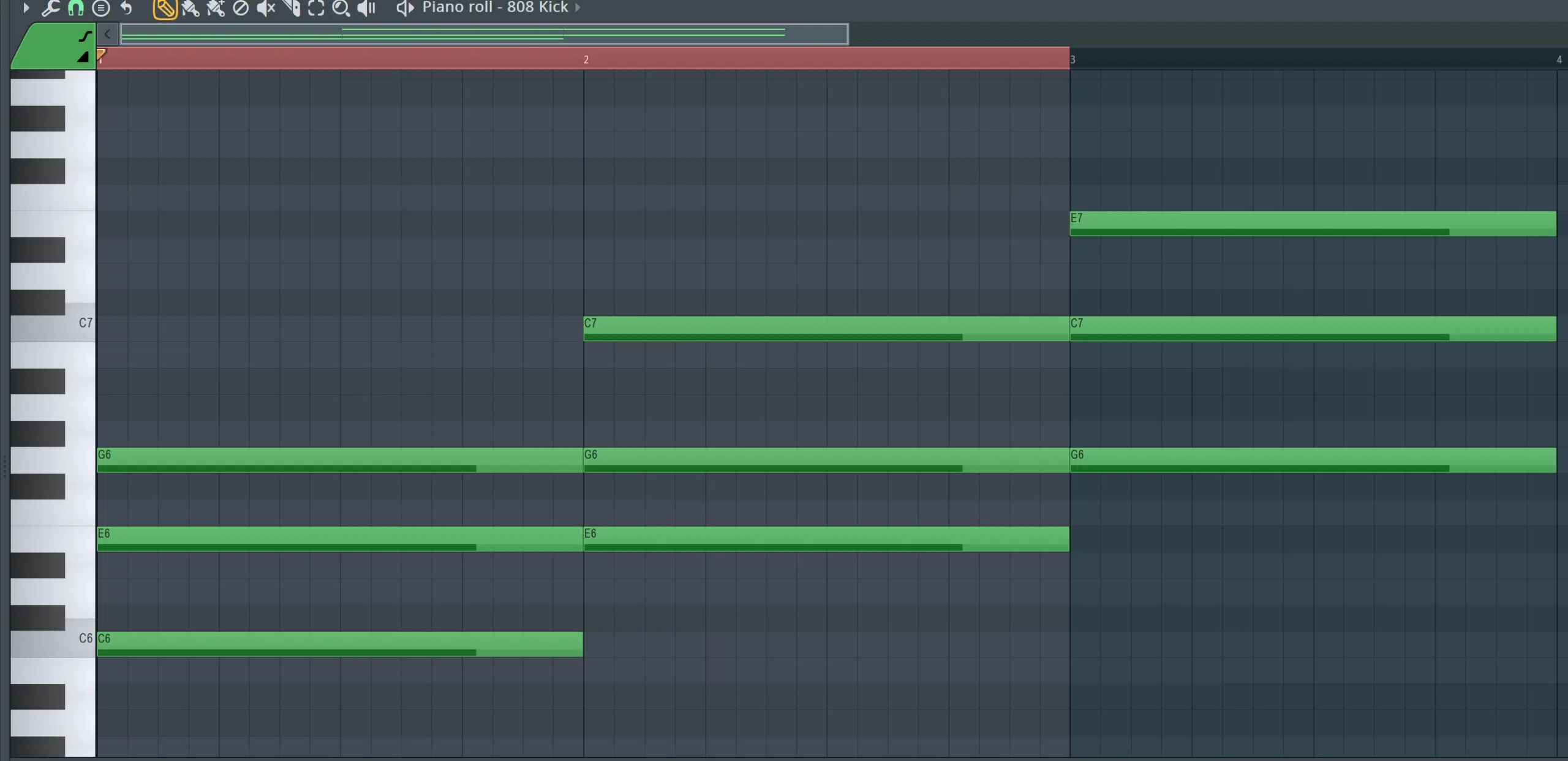
Imagine a hip-hop track without its distinct rhythmic pattern or a super catchy melody.
It feels empty, right?… well, that’s where chord progressions come into play.
They provide the musical canvas for every other element in the track.
Some popular chord progressions evoke feelings of nostalgia 一 while another chord progression can make you feel pumped up and ready to hit the dance floor.
It’s all about the emotional journey you want to take your audience on.
A vast majority of hit tracks, especially in hip-hop and trap, have relied on tried-and-tested chord progressions.
There’s a reason certain progressions are popular; they resonate with listeners.
But while it’s tempting to stick with what’s popular, there’s also a world of unexplored chord combinations out there.
Remember, innovation has always been at the heart of music, so never be afraid to get crazy with your chord progressions.
-
Music Theory: A Brief Rundown
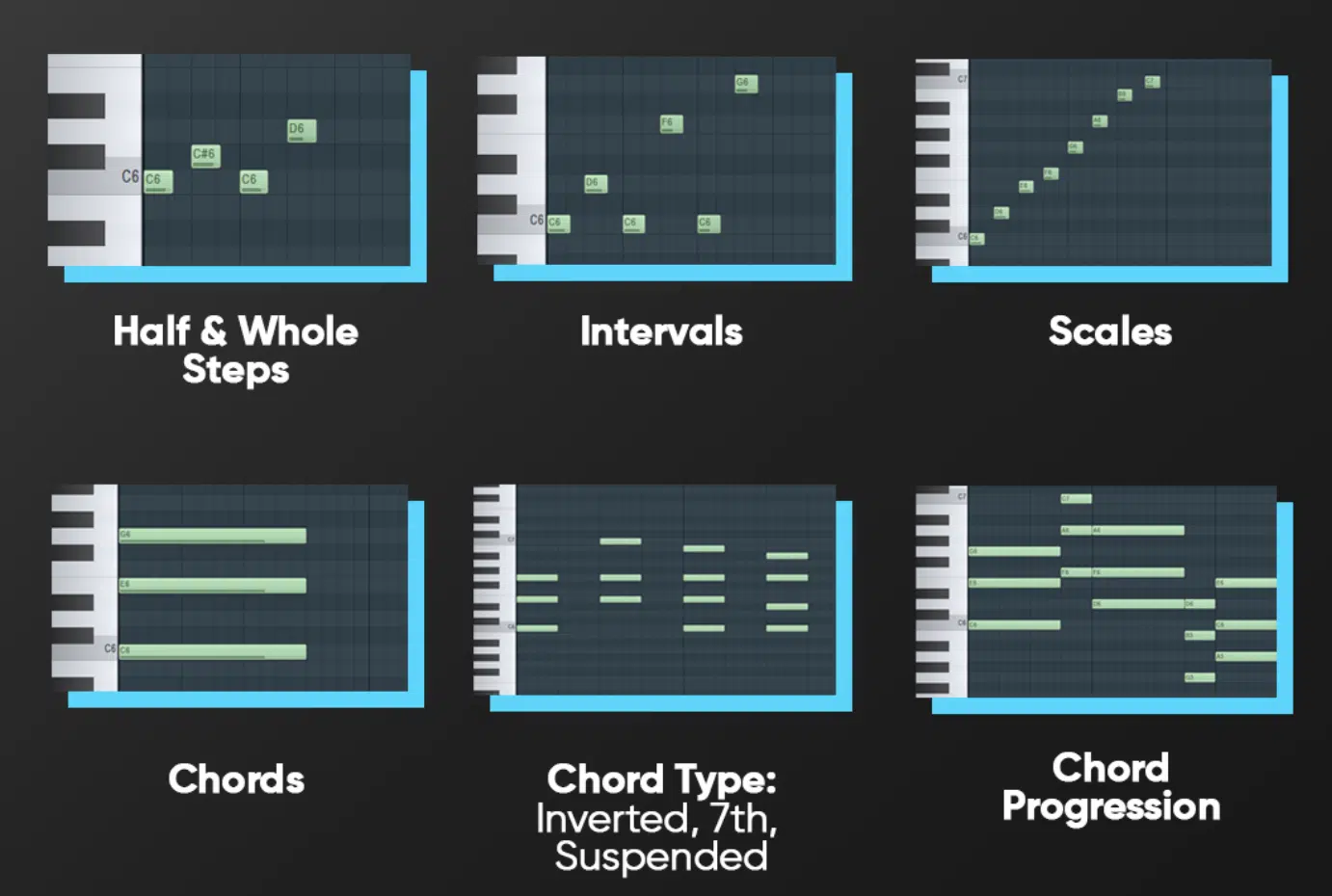
Music theory might seem daunting, especially for self-taught producers, but it’s like learning the rules of a game.
It gives you the tools to understand why certain chord progressions sound so good.
At its simplest, music theory teaches you about scales and keys.
For example, in the key of C Major, you have the C major scale 一 which is made up of seven distinct notes.
Each note in the scale corresponds to a chord.
So when you hear someone talk about the I or the IV in a chord progression, they’re referring to the position of the chord within that scale.
Armed with this knowledge, you can start experimenting.
Knowing the music theory behind chord progressions can significantly amplify your production game.
As well as allow you to craft masterpieces that resonate deeply with listeners.
If you’d like to learn everything about music theory, we’ve got you covered, in detail.
Your First Dive into Chord Progression Charts
Every artist needs a palette, and for digital music producers, chord progression charts are just that.
They act as a guide, helping producers select chords that work harmoniously together 一 laying the groundwork for beautiful symphonies.
-
Unraveling Chord Progression Charts
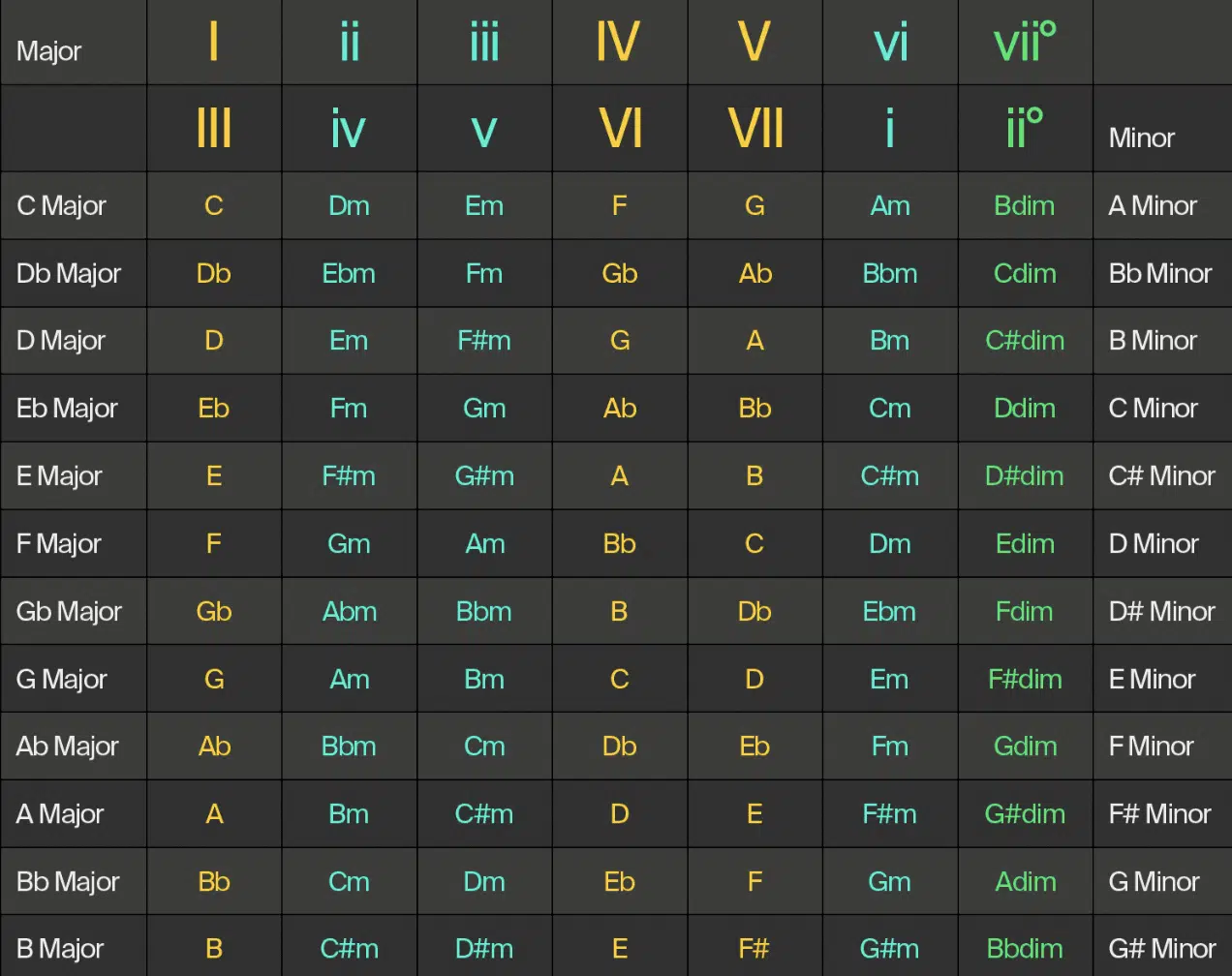
A chord progression chart offers a visual representation of potential chord sequences in any given key.
It’s a cheat sheet for crafting compelling sonic stories.
For music producers, a chord progression chart can be a real game-changer.
Say you’re working in the key of C Major 一 the chord progression chart will show you all the major chords and minor chords that fit naturally within that key.
But the magic lies in how you interpret this chord progression chart.
While it gives you structure, the beauty of unique music is in how you bend or break these rules.
The chord progression chart might suggest a G chord progression after a C Major chord, but if you feel an F-G progression works better, always trust your instincts!
In the digital age, there are countless online tools, programs, and apps to help producers with chord progression charts.
From interactive chord progression charts that play the chords for you to detailed chord progression charts for more complex progressions, the resources are endless.
For those just starting, it’s always good to familiarize yourself with the chord progression charts of popular keys like C Major.
As you get more comfortable, explore less common keys and experiment with unique progressions.
-
Popular Chord Progressions in Hip-Hop
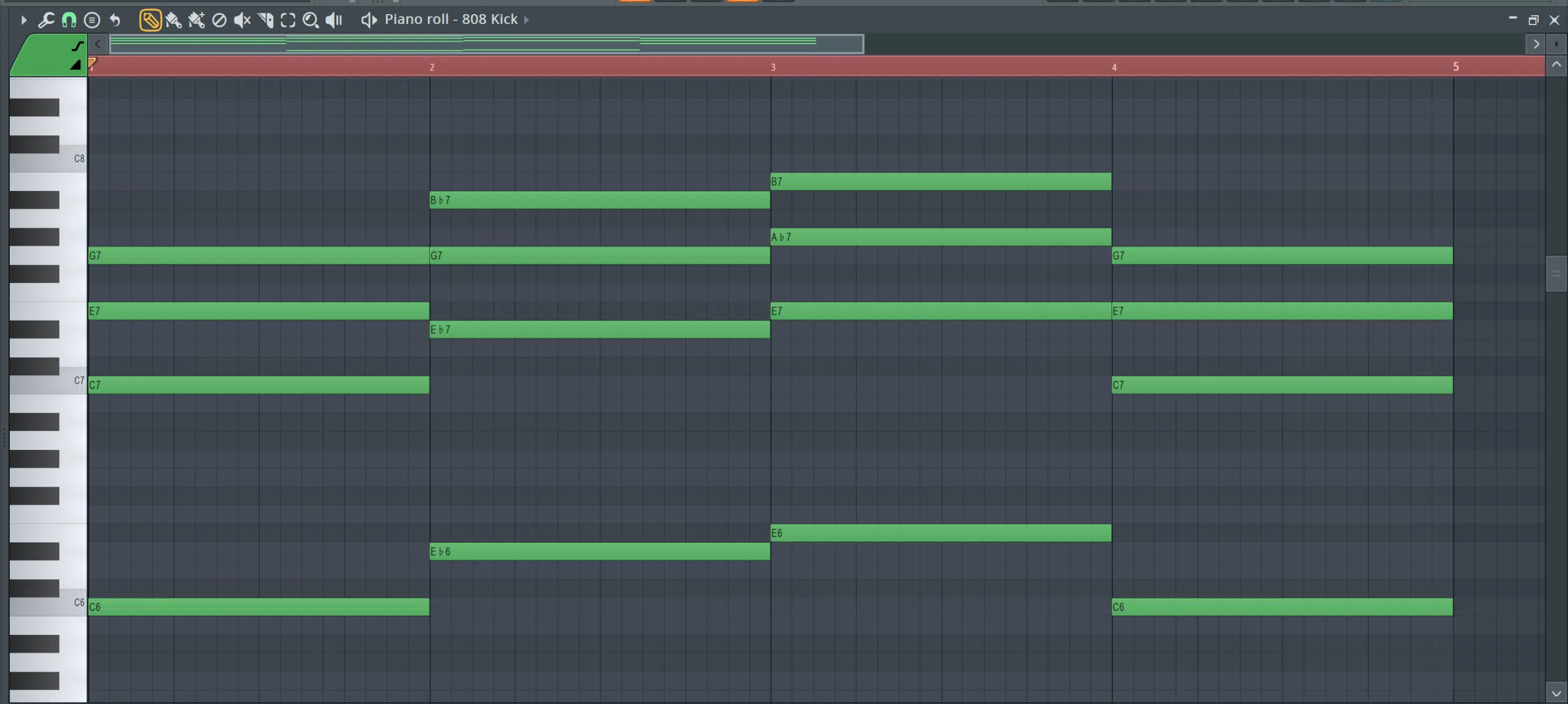
Shown above, are octave stacks (hip-hop chord progressions)
Another favorite is the ii-V-I progression, especially in jazz-influenced hip-hop tracks.
In the key of C, this translates to:
- Dm7
- G7
- CMaj7
Think of tracks like “T.R.O.Y.” by Pete Rock & CL Smooth, where jazzy chord progressions take the front seat 一 giving it a timeless feel.
The vi-IV-I-V chord progression is another classic, often found in soulful and emotional hip-hop ballads.
In C major, this would be:
- Am
- F
- C
- G
An example would be Kanye West’s “Heard ‘Em Say” where the chord progression adds to the song’s contemplative nature.
Chord progressions using seventh chords are prevalent in neo-soul-influenced hip-hop.
NOTE: Artists like Erykah Badu and D’Angelo often use these to add some extra depth and richness to their sound.
Lastly, it’s essential to recognize that while these are foundational, the best producers often add their twist.
Such as bringing in borrowed chords or modulations to make their tracks stand out.
-
What is a Scale Degree?

In music theory, each individual note in a scale is assigned a number, called its ‘scale degree.’
The first note is 1 or the “tonic,” and it goes up from there (as shown above).
This system allows musicians to discuss and analyze music universally, regardless of the specific key.
In a C Major scale:
- C is the 1st degree
- D is the 2nd
- So forth
These numbers often become more crucial when we discuss chord progressions since they’re used as shorthand.
For example, the ii-V-I chord progression we discussed earlier represents the chords built on the 2nd, 5th, and 1st scale degrees.
Knowing scale degrees aids in transposing songs to different keys effortlessly.
As a digital music producer, understanding scale degrees is foundational; like knowing the coordinates of a map.
This knowledge allows you to explore and innovate 一 crafting unique sounds that resonate with audiences.
Chords breathe life into a track. As we navigate the realm of major chords and minor chords, remember that they’re not just groups of notes but carriers of emotion and intent.
-
Major Chords
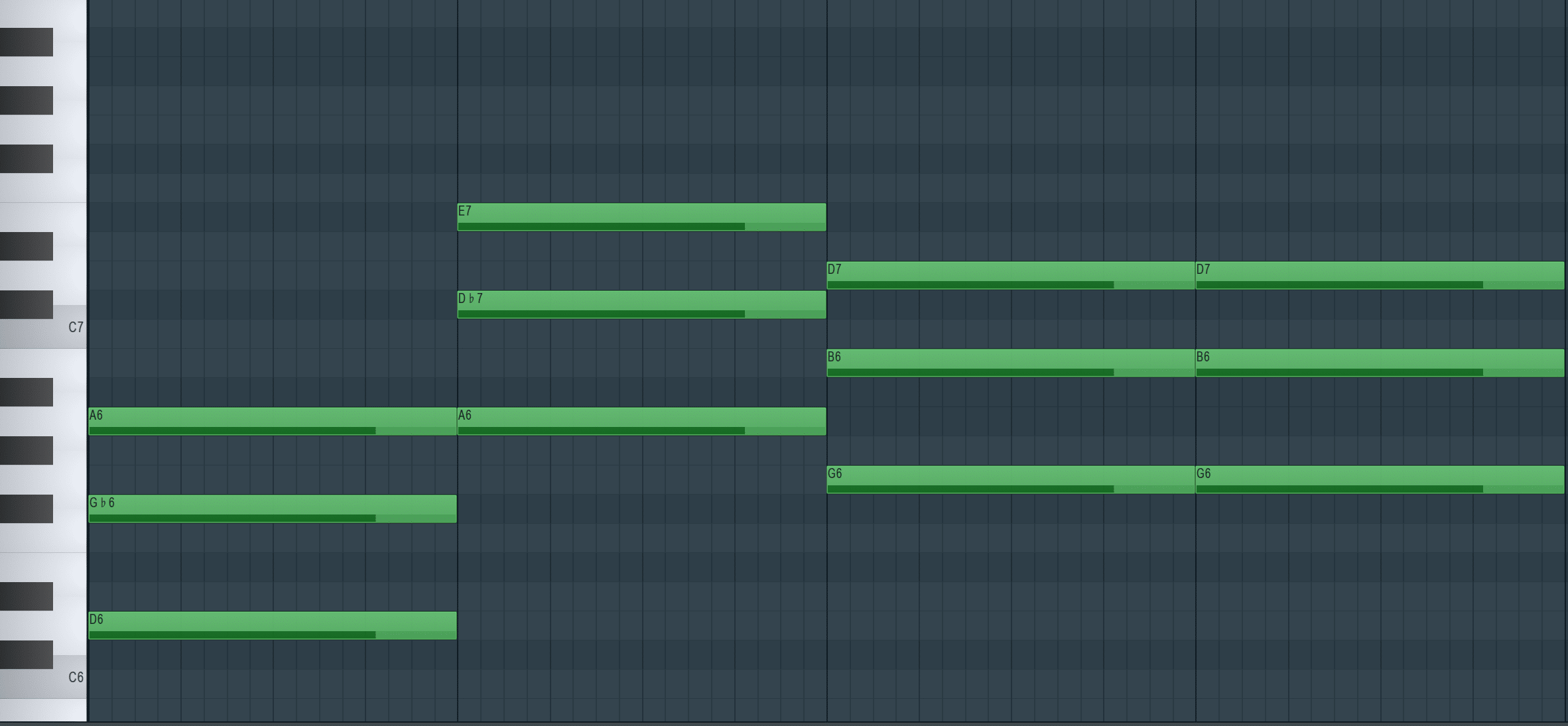
Major chords are often described as happy, bright, and uplifting.
Major chords are built using:
- The first note (the root note)
- Third note
- Fifth notes of a major scale
In the C Major scale, the C Major chord consists of the notes C, E, and G.
These chords are prevalent in upbeat hip-hop tracks and anthems; think of Pharrell’s “Happy,” which uses major chords to underline its cheerful message.
Major chords aren’t just restricted to positive songs…
They can be used in contrast to minor chords to bring out a more nuanced emotion.
A transition from a major to a minor chord can depict a shift from hope to despair or happiness to heartbreak.
For producers, major chords serve as a palette’s bright colors 一 helping punctuate moments of joy, victory, or celebration in their tracks.
-
Minor Chords
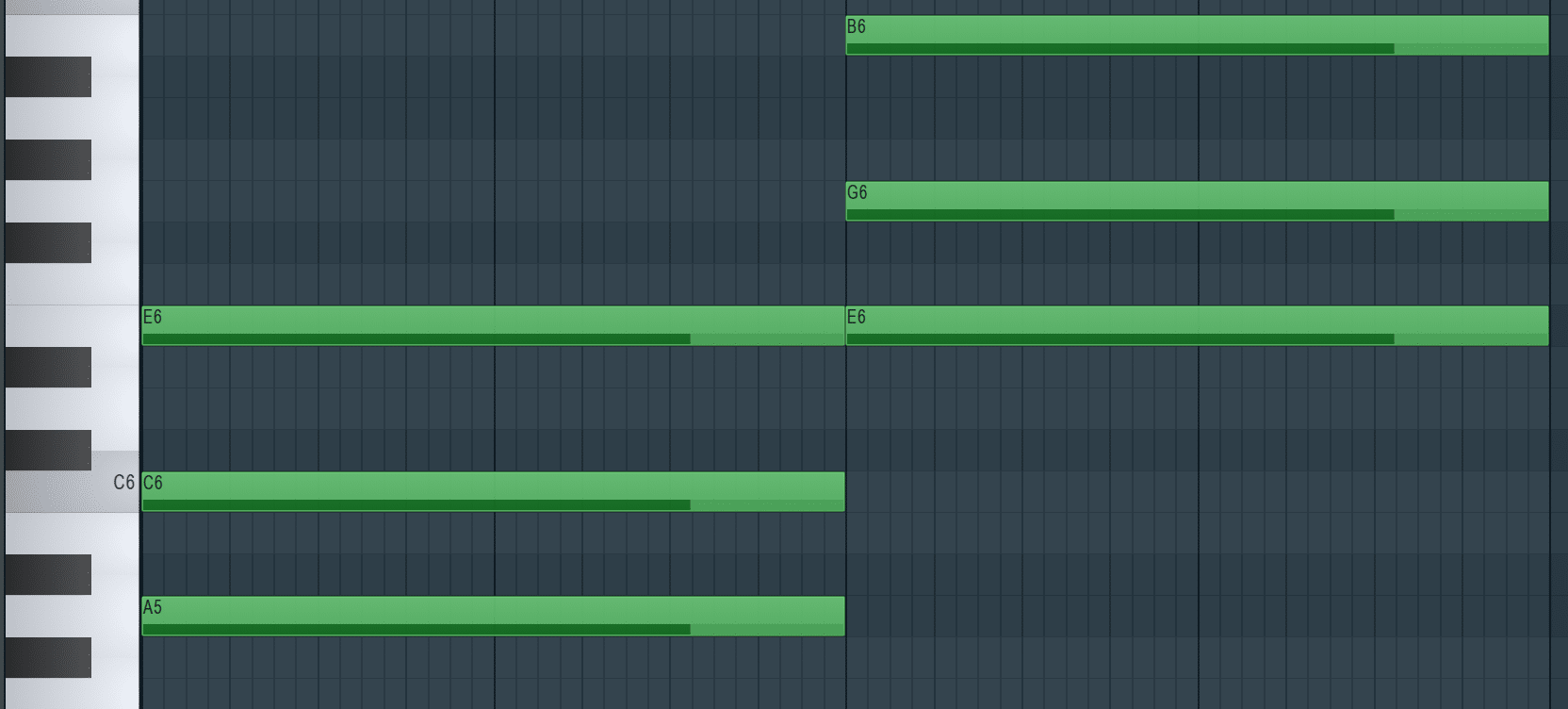
Minor chords bring depth, sorrow, or introspection to your beats.
Minor chords are constructed using:
- The root note
- A minor third
- The fifth note of a scale
For instance, in the C Major scale, the A minor chord (the vi chord) is made of A, C, and E.
These chords are staples in melancholic or more intense hip-hop tracks.
Take the haunting progressions in “Stan” by Eminem or the introspective chords in J. Cole’s “Love Yourz.”
But, like major chords, minor chords have versatile uses…
They can be sprinkled amidst major chords to bring about a sense of nostalgia or bitter-sweet memories.
As a producer, artist, or sound designer, understanding when to use a minor chord can help in painting a more vivid emotional landscape.
It provides depth and contrast to your compositions.
-
The Major Key

The major key, often associated with uplifting, triumphant, and joyful emotions, is based on the major scale, which consists of seven distinct notes.
In the C Major key, these notes are:
- C
- D
- E
- F
- G
- A
- B
One hallmark of hip-hop production in a major key is its ability to convey immense optimism and hope.
DJ Khaled’s “All I Do Is Win” is rooted in this energy with this chord progression formula 一 propelling its anthem-like quality.
When producing in a major key, it’s essential to consider the intervals between notes, which dictate the scale’s unique sound.
The pattern for a major scale is:
- Whole
- Whole
- Half
- Whole
- Whole
- Whole
- Half
Mastering major keys can offer an extensive toolkit for digital music producers.
This opens doors to a myriad of progressions and melodies that resonate with listeners on a fundamental, emotional level.
-
The Minor Key
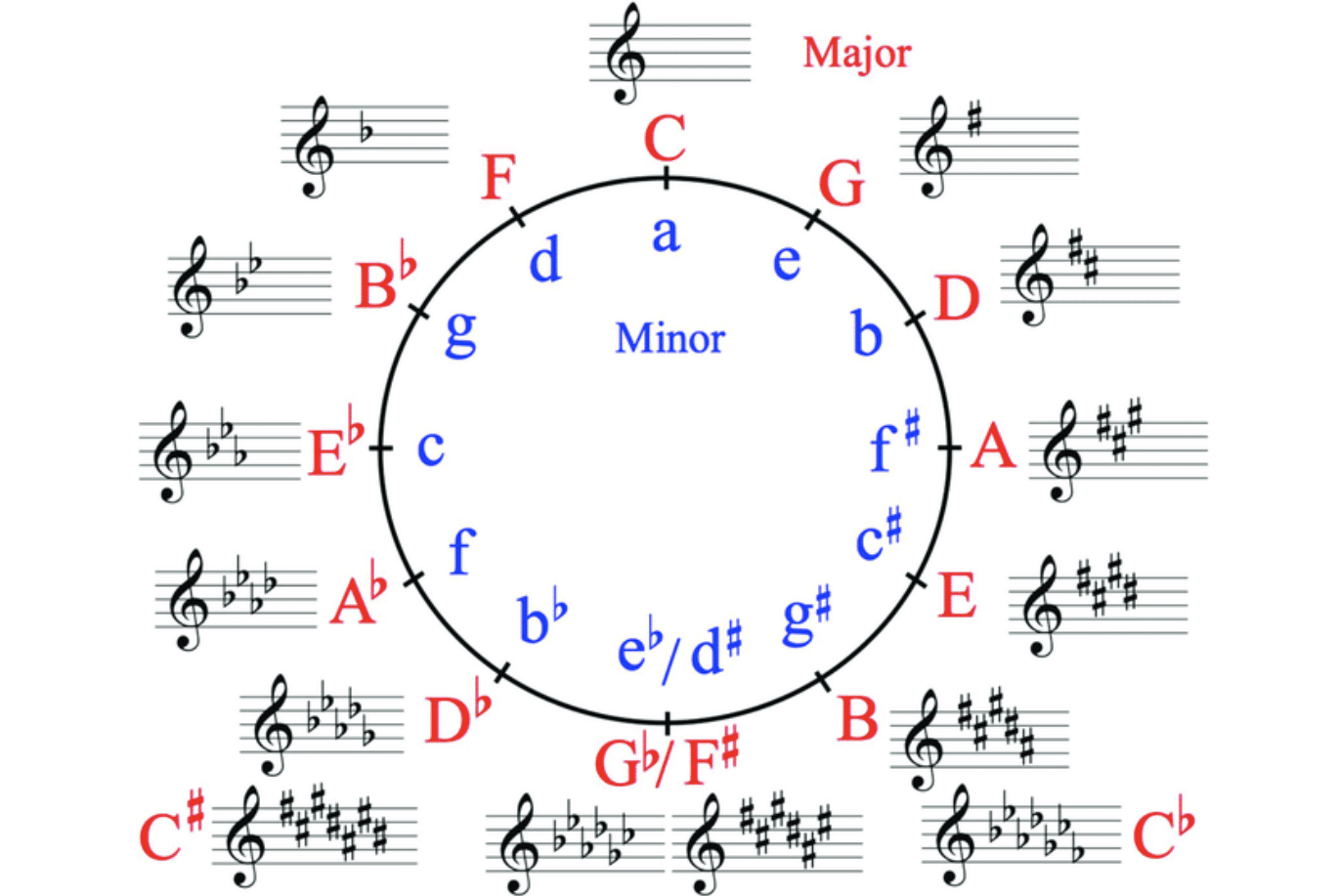
Minor keys bring forth a different emotional spectrum, often introspective, melancholic, or mysterious.
The natural minor scale, for instance, has a distinct pattern:
- Whole
- Half
- Whole
- Whole
- Half
- Whole
- Whole
Notable hip-hop tracks that leverage the power of the minor key include Kendrick Lamar’s “M.A.A.D City” and Mobb Deep’s “Shook Ones, Pt. II”.
Both tracks utilize the minor key to emphasize their gritty, raw narratives.
There are also variations like the harmonic minor and melodic minor scales, each with its unique flair.
These scales add tension and release in different manners 一 offering you a vast canvas on which to experiment.
The ability to navigate and innovate within minor keys is paramount for a hip-hop producer.
Especially when aiming to craft tracks with depth, tension, or a moody atmosphere.
Common Chord Progressions
Each genre has its favored progressions, sequences that have stood the test of time.
In hip-hop, certain progressions dominate 一 shaping its unique sound and ongoing evolution.
-
Roman Numerals: Breaking it Down

Roman numerals in music theory are a way to represent chords within a key.
The tonic or first chord is represented as “I” in major and “i” in minor.
This system helps in transposing, analyzing, and communicating about music universally.
Always remember that:
- Capital Roman numerals 一 Represent a Major chord.
- Lowercase Roman numerals 一 Represent a minor chord.
For instance, the IV-V-I progression remains the same across keys, whether it’s F-G-C in C Major or Bb-C-F in F Major.
A common chord progression like vi-ii-V-I in C Major translates to Am-Dm-G-C.
Seeing such progressions in Roman numerals helps producers quickly grasp the song’s structure and mood.
For budding hip-hop producers, mastering the Roman numeral system is a game-changer.
It streamlines the process of creating, modifying, and even reversing progressions 一 allowing for maximum creativity with minimal fuss.
-
More Common Chord Progressions in Hip-Hop
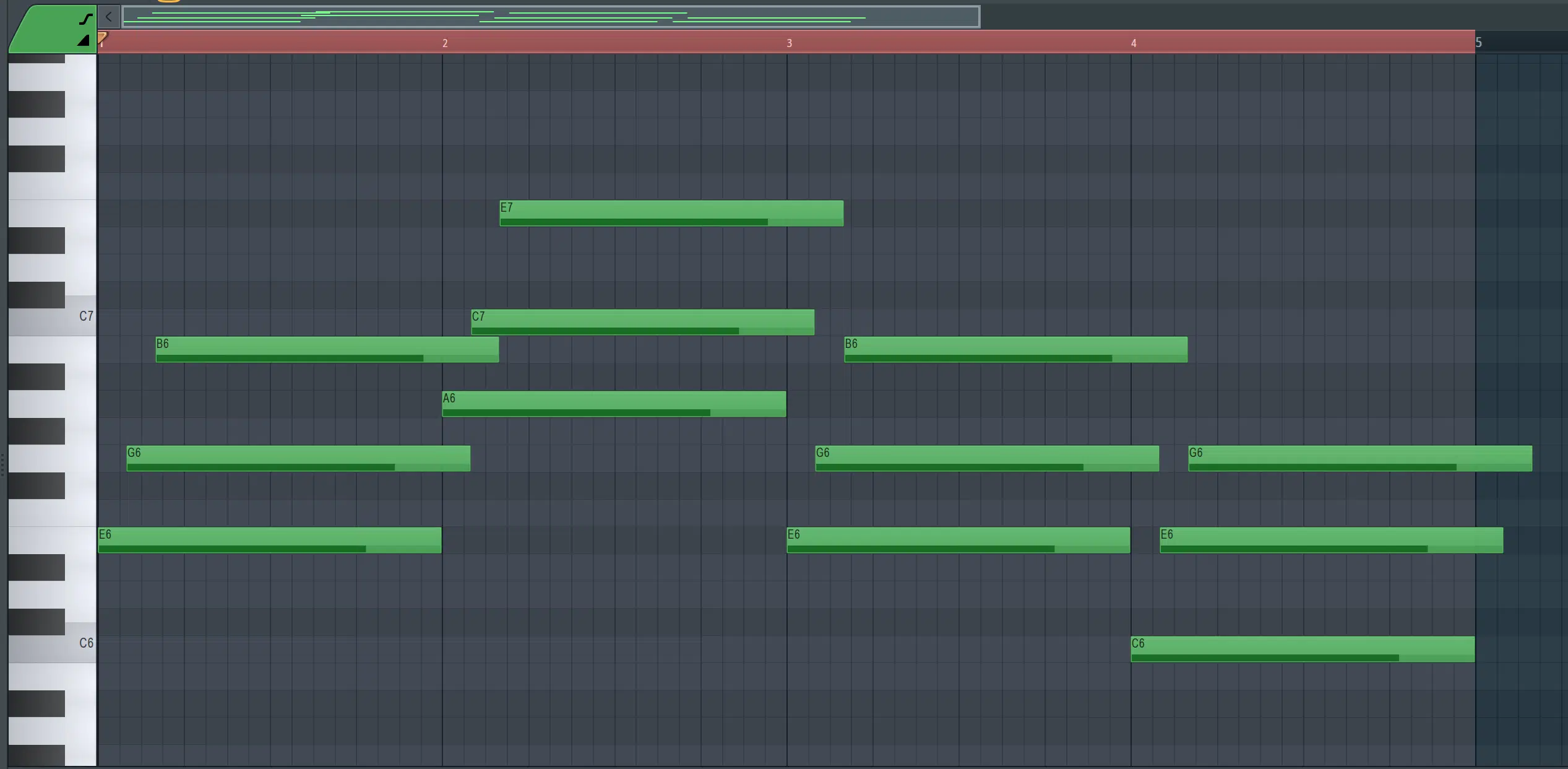
Hip-hop, as a genre, has seen an array of chord progressions that lend themselves to its unique soundscape.
The simplicity of some chord progressions (a simple progression) allows the rhythm and lyrics to take center stage.
The classic ii-V-I chord progression, a common chord progression in jazz, has found its way into numerous hip-hop tracks, especially those that sample vintage jazz records.
This ii-V-I chord progression offers a sense of resolution, ideal for tracks with a smooth, reflective feel.
Another favorite is the I-IV-V chord progression, which is essentially the bedrock of many musical genres, from blues to rock and beyond.
In hip-hop, this I-IV-V chord progression often gets a modern twist 一 either through unique instrument choices, like synths, or rhythm adjustments fitting for rap vocals.
The I-V-vi-IV chord progression, while more commonly associated with pop music, has also made notable appearances in hip-hop.
Its repetitive and catchy nature makes it a solid choice for hip-hop anthems that bridge into the mainstream.
NOTE: Songs like “No Sleep Till Brooklyn” by Beastie Boys exhibit this progression’s versatility.
Lastly, the i-vii°-VI-V chord progression is worth noting for its darker, more melancholic tone.
Ideal for tracks that dive into deeper emotional or introspective themes, it’s been used effectively by artists aiming for a moody, evocative sound.
As hip-hop’s sonic landscape continues to expand, producers keep reimagining these foundational progressions.
This ensures the genre remains as vibrant and innovative as ever.
Major Scales & Minor Scales: Everything You Need to Know
Scales are the building blocks of music.
By understanding the major and minor scales, you equip yourself with the foundation to craft memorable melodies and chord progressions.
-
The Major Scale
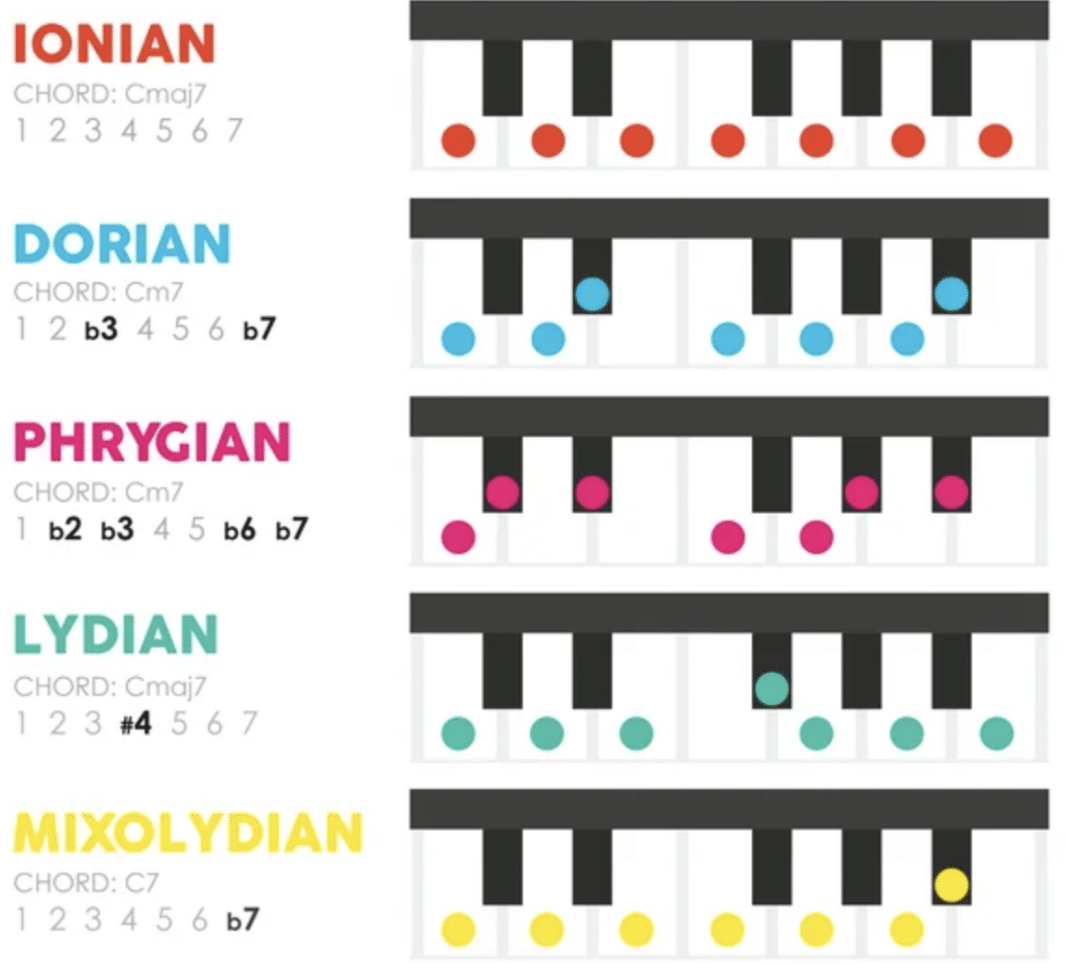
The major scale, as previously noted, has seven distinct notes and follows a set pattern of whole and half steps.
It’s the foundation for many popular chord progressions in hip-hop.
Playing a major scale, like the C Major, evokes a sense of resolution and happiness 一 making it a go-to for upbeat tracks.
Scales also dictate which chords are diatonic or naturally belong to that key.
In C Major, these are:
- C
- Dm
- Em
- F
- G
- Am
- Bdim
Digital music producers should practice major scales across various keys.
It’s not just about knowing the notes, but feeling the scale’s emotion and understanding its sonic potential.
-
The Minor Scale
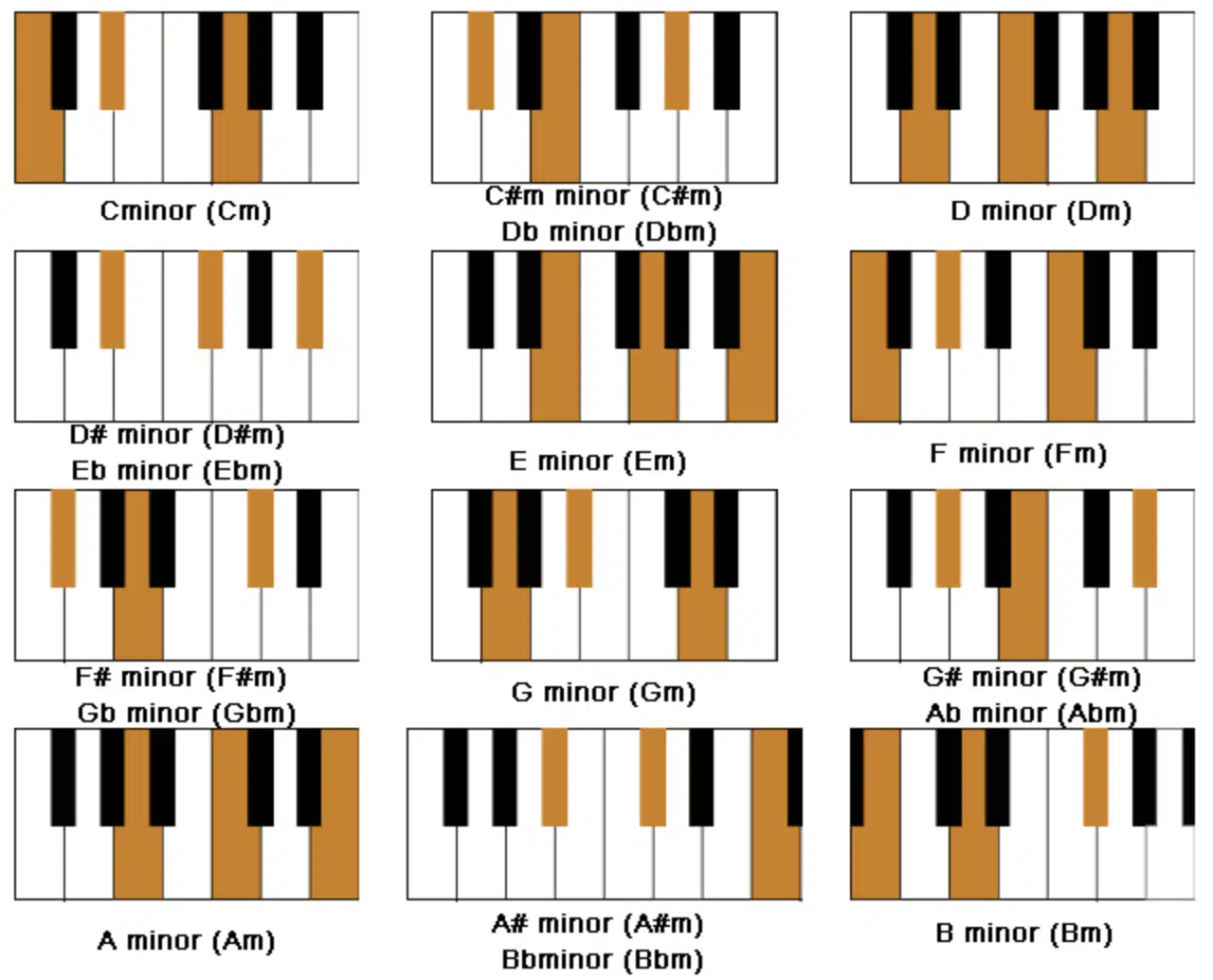
Equally important is the minor scale, which can be natural, harmonic, or melodic.
The natural minor scale in A, for instance, has the notes:
- A
- B
- C
- D
- E
- F
- G
Minor scales provide the emotional counterbalance to major scales; they’re pivotal in tracks that require depth, tension, or a somber tone.
As with major scales, the chords diatonic to a minor scale are crucial.
In A minor, these include Am, Bdim, C, Dm, E, F, and G.
For a holistic approach to production, one should be as familiar with minor scales as with major ones.
They open the door to a rich array of emotions, from the brooding to the introspective.
Diminished Chords & Tonic Chords
These chords may sound complex, but understanding them can significantly elevate your music, adding layers of tension, resolution, and sophistication.
They can help you not only understand chord progressions but make them more alluring.
-
The Allure of Diminished Chords
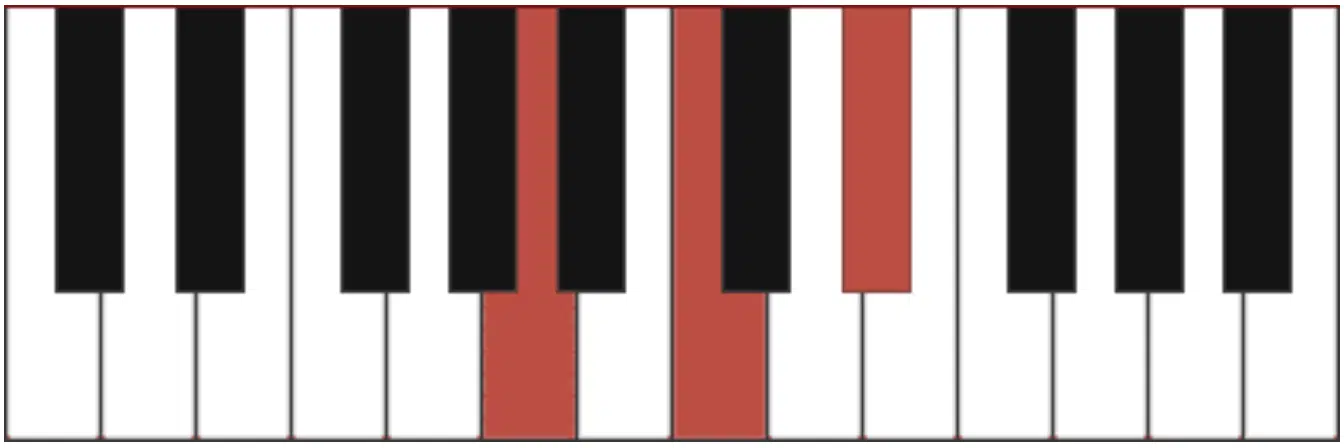
Diminished chords, built using a root, a minor third, and a diminished fifth, are tension-packed.
In C, the notes are:
- C
- Eb
- Gb
They often serve as transitional chords and lead the listener to anticipate a resolution 一 which can be a powerful tool in songwriting.
In hip-hop, these diminished chords aren’t as common as major or minor chords, but when used, they offer a unique flavor.
NOTE: Producers like Dr. Dre and Timbaland use them all day to add suspense or drama to different songs.
For music producers, diminished chords are like spices: used sparingly but effectively, they can transform a track from mundane to mesmerizing.
-
Tonic Chords: The Showstoppers
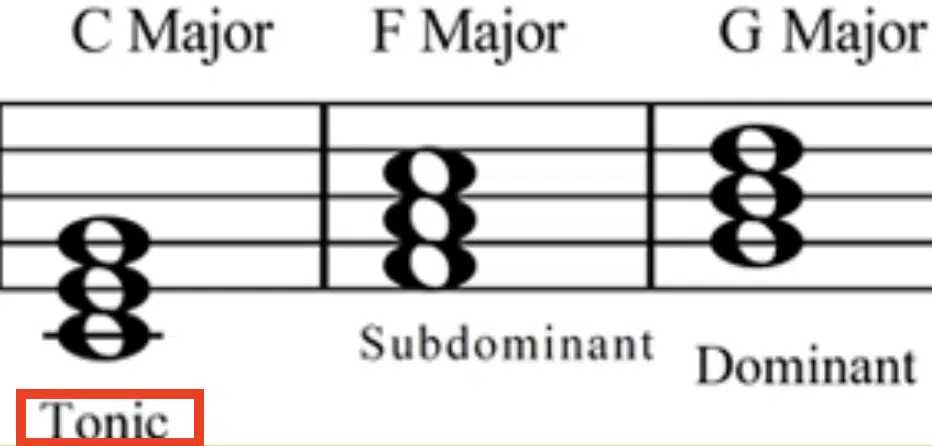
The tonic chord, be it major or minor, is the “home” chord, the point of resolution in a key.
In C Major, the tonic chord is C, and in A minor, it’s Am.
It’s the chord that provides a feeling of completion 一 making it crucial in songwriting to signal the end of musical phrases or the song itself.
In hip-hop, the tonic often grounds the track and provides familiarity amidst complex progressions or melodies.
It’s the chord that resonates with the listeners, making them feel at home.
As producers and musicians, leveraging the power of the tonic chord can help anchor a track.
It ensures that, amidst all the experimentation, there’s a point of familiarity for the listener.
Speaking of complex chord progressions, if you’re looking for the dopest advanced chord progressions, we’ve got you covered.
-
Bonus: Root Note, Second Note, Third Note
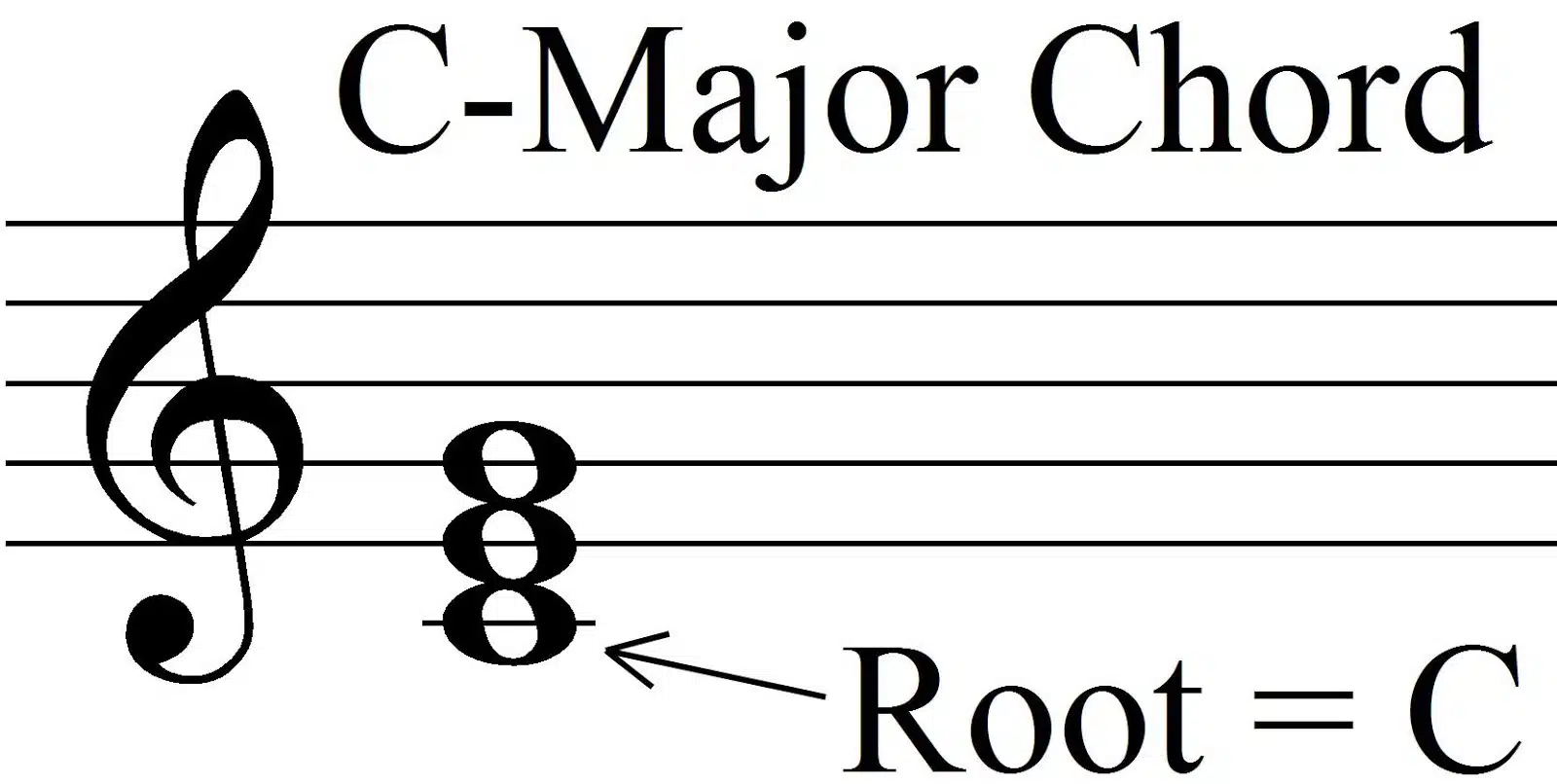
At the heart of any chord lies its root note; the foundational pitch upon which the rest of the chord is built.
In a C Major chord, for example, the root note is C.
The second note (often called the third because it’s a third interval away from the root) defines the chord’s major or minor quality.
In a C Major chord, this note is E, while in C minor, it’s Eb.
The third note (confusingly known as the fifth) solidifies the chord’s tonal quality.
For C Major, this is G. ‘
Together, the root, third, and fifth form the triad, the most basic chord structure.
NOTE: Triads are the bedrock of chord progressions in hip-hop 一 from the most straightforward beats to sophisticated productions.
Understanding the relationship between root notes, the second note, and the third note is crucial.
It helps in:
- Voicing chords
- Creating harmonies
- Experimenting with inversions
Knowing all these kinds of notes and chord sequences is super important if you’re looking to produce intriguing chord progressions.
Chord Arrangement Techniques
How you arrange your chords can drastically affect the mood, groove, and resonance of your track.
-
How To Arrange Chords
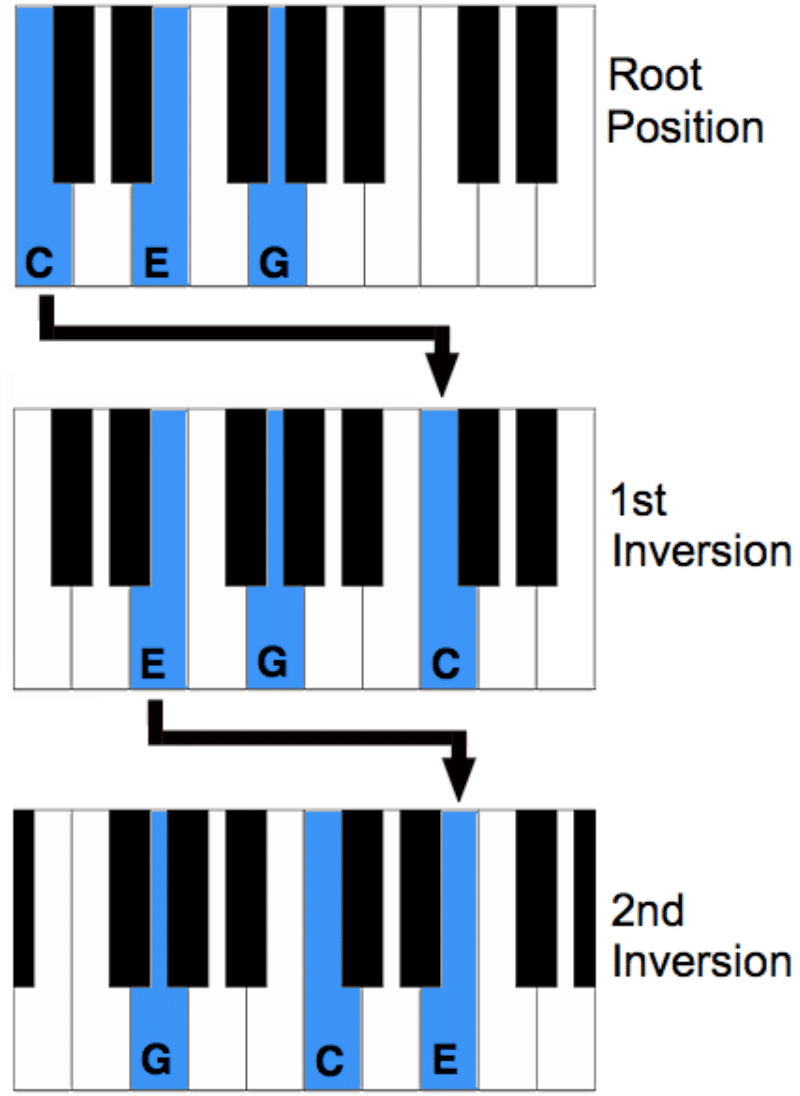
Learning how to arrange chords in unique and desirable ways can help your tracks stand out and get the attention they truly deserve.
Plus, you’ll have fun playing around with a certain chord sequence or the right chords for your vision.
In music, voicing refers to the arrangement of notes within a chord.
Different voicings can elicit different emotions, yes even with the same set of notes.
Consider the inversion technique… A standard C Major chord is C-E-G, but its first inversion is E-G-C.
This shifts the bass note and provides a whole different flavor to the chord progression itself.
Spread voicings, where notes of the chord are spread out over multiple octaves, can add richness to a track.
It’s a favorite in hip-hop ballads or more ambient tracks.
Rhythm is equally crucial, of course.
Syncopation, or placing accents on off-beats, can add groove and make a chord progression feel more dynamic 一 essential for hip-hop’s rhythmic foundation.
-
The Evolution of Hip-Hop Chord Progressions
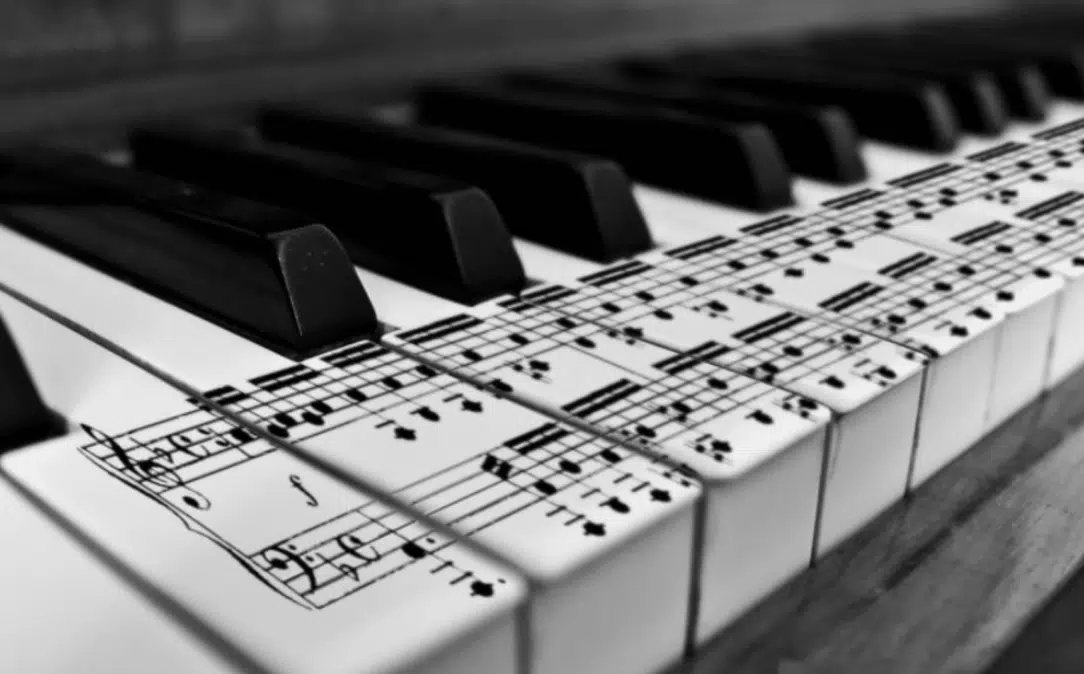
From its inception, hip-hop was built on samples; often jazz, funk, or soul records.
Early producers would loop sections and craft beats around these snippets.
As the genre evolved, so did its more common chord progressions.
Producers began integrating live instrumentation, bringing in more complex chords and progressions influenced by R&B, gospel, and even rock.
The 2000s saw a rise in minimalism.
NOTE: Tracks by producers like The Neptunes utilized sparse but impactful chords, proving that sometimes less is more.
Today, there’s a resurgence in lush, jazzy chords, partly due to the lo-fi hip-hop movement.
Producers are blending old-school techniques with modern twists 一 creating a tapestry of sounds that push boundaries.
So, when you’re creating your own chord progressions, make sure to mix it up and get creative.
Pushing Boundaries: Exploring & Innovating with Chords
Modern hip-hop thrives on experimentation. While its roots remain, today’s producers constantly seek ways to innovate.
-
Complex Chord Progressions
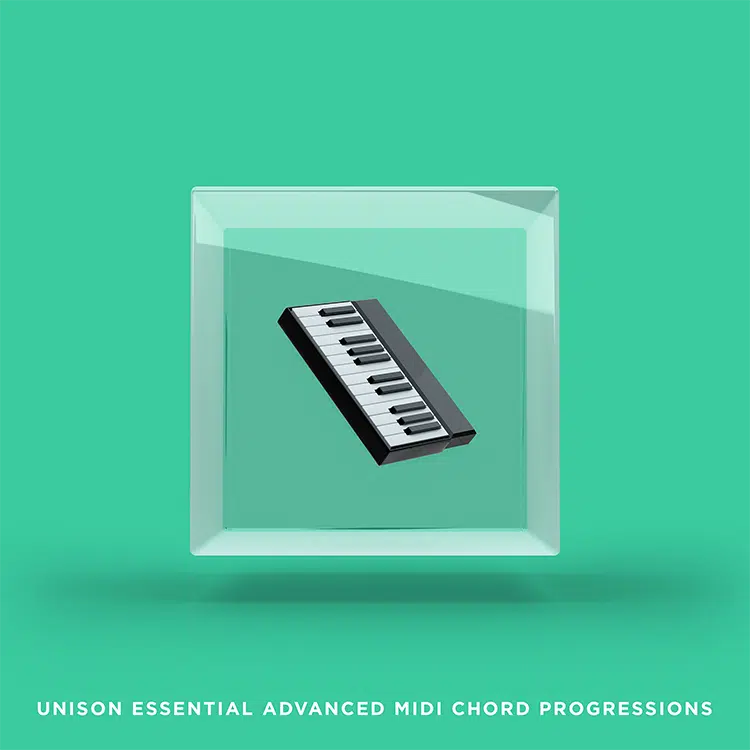
Complexity can add depth to your simple chord progressions and make your tracks super captivating and ear-catching.
Jazz-influenced progressions (which might use 7th, 9th, or even 11th chords) are making their way into hip-hop.
Using borrowed chords, chords taken from other keys can introduce unexpected twists into a track.
This will catch the listener’s ear and keep them intrigued.
Modulation, or changing the key mid-song, is another tool.
Though rarer in hip-hop, when done right, it can elevate a track, adding drama and intensity.
Experimentation is key, as you shouldn’t be afraid to venture outside traditional progressions.
After all, this is often where the magic happens.
Getting Creative: Advanced Tips
Getting creative with your chords and chord progressions can further enhance the intrigue of your beats.
#1. Layering Chords with Synths, Pads, or Other Textures
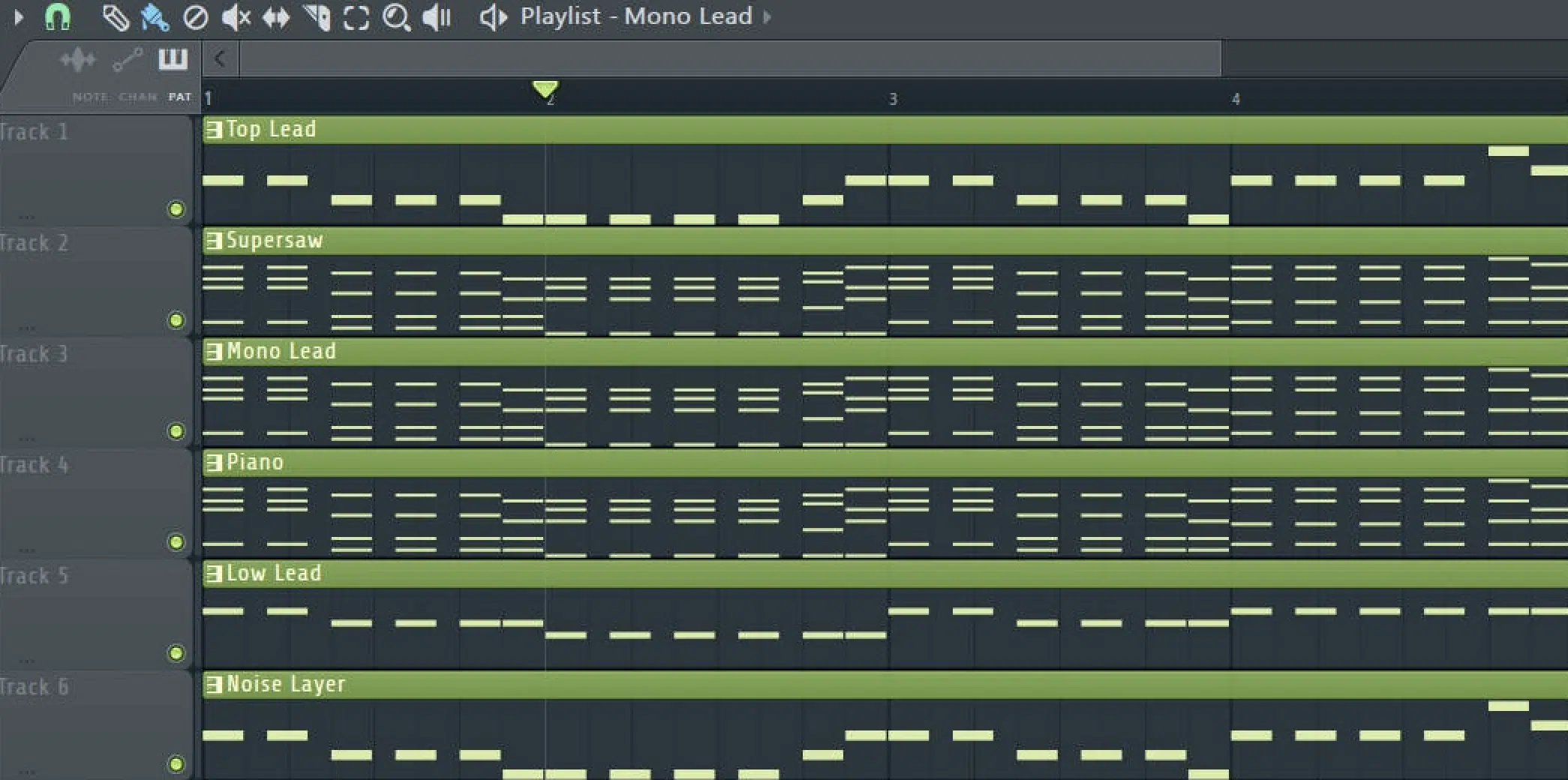
Layering chords with synths, pads, or textures can add depth and ambiance to a track.
Think of it as painting with sound 一 each layer offers a new hue.
#2. Consider Chord Substitutions

Chord substitutions are where one chord is replaced by another, usually sharing a common note.
This can introduce subtle shifts in tone or mood.
#3. Arpeggios
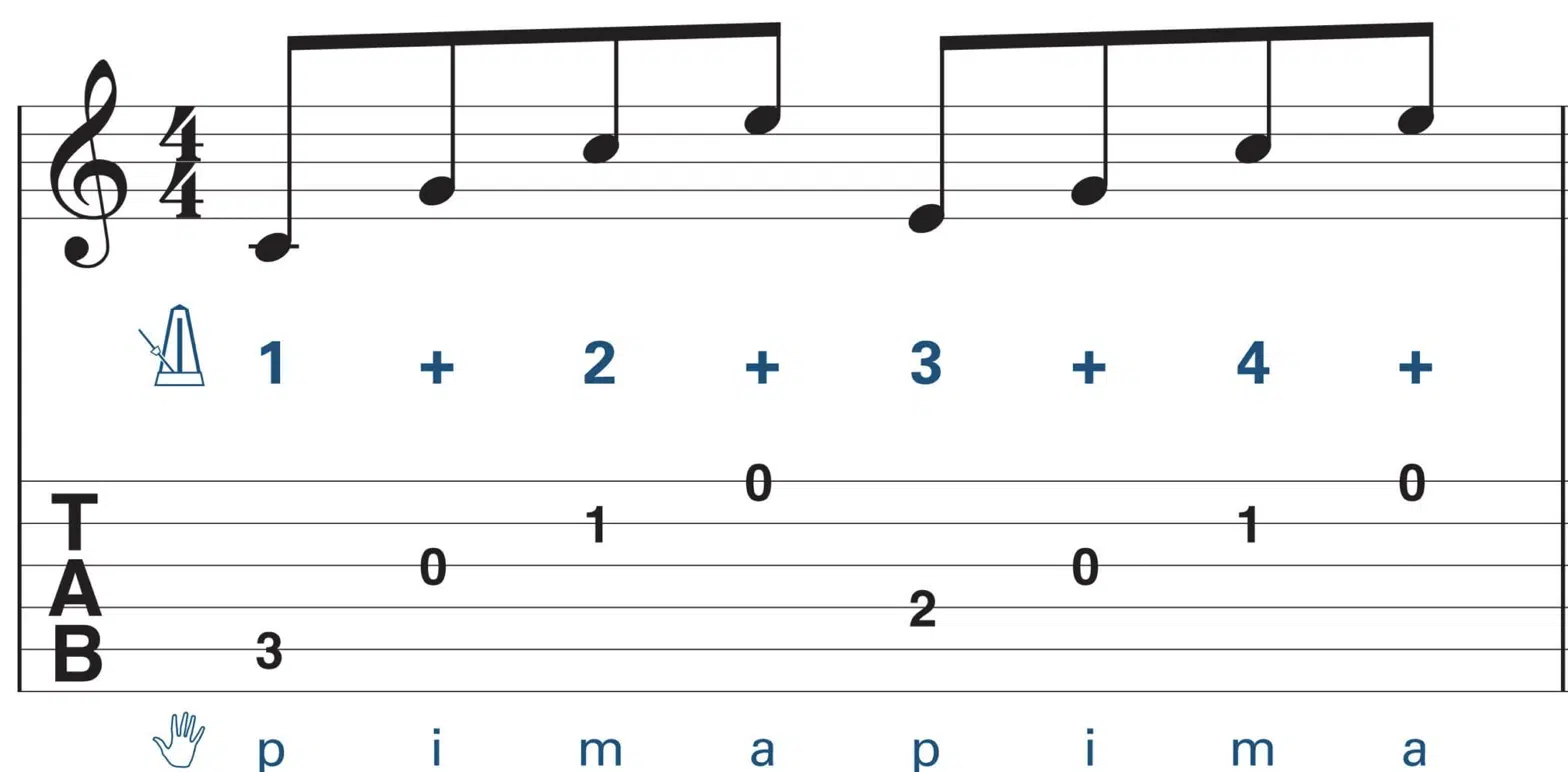
The use of arpeggios (playing the notes of a chord sequentially rather than simultaneously) can create rhythmic interest and momentum.
#4. Don’t be bound by “rules.”
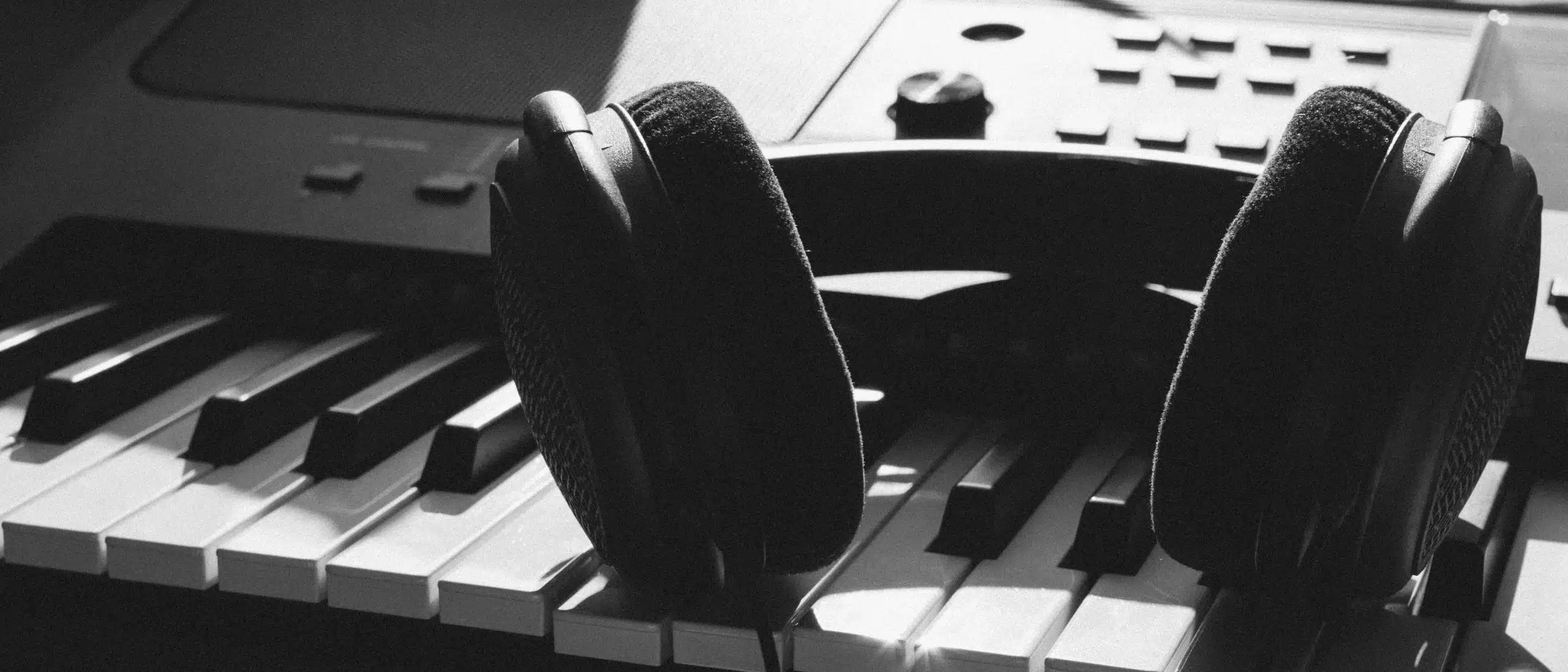
Sometimes, the most memorable progressions come from unexpected places.
Always trust your ear and intuition.
Chord Progression Chart: Final Thoughts
So, as you can see, chord progressions aren’t just a sequence of notes strung together, they are the very pulse of music.
Understanding the intricacies of a chord progression chart can transform your sound from an unsure melody to a chart-topping banger.
But if you’re looking for a jump-start or just a bit of inspiration to infuse your music with some of the industry’s best sounds, you absolutely need the Free Essential Famous MIDI Chord Progressions.
This invaluable resource boasts 24 unique MIDI chord progressions from legendary hits spanning a range of artists from Led Zeppelin to Travis Scott.
Whether you’re looking for that retro rock vibe or a modern hip-hop bounce, this collection covers it all.
Integrating these chord progressions into a track you’re already cooking up might be the missing ingredient to elevate your sound to a radio-worthy level.
Alternatively, they can serve as a solid foundation for a new song 一 ensuring your track starts off on a high note.
And for those dedicated to mastering the art, analyzing these progressions offers a deep dive into understanding chord sequences in popular music.
Remember, in the vast landscape of music production, knowledge is power.
By mastering chord progressions and utilizing resources like the Famous MIDI Chord Progressions, you’re not just playing notes, you’re crafting memories.
Until next time…







Leave a Reply
You must belogged in to post a comment.